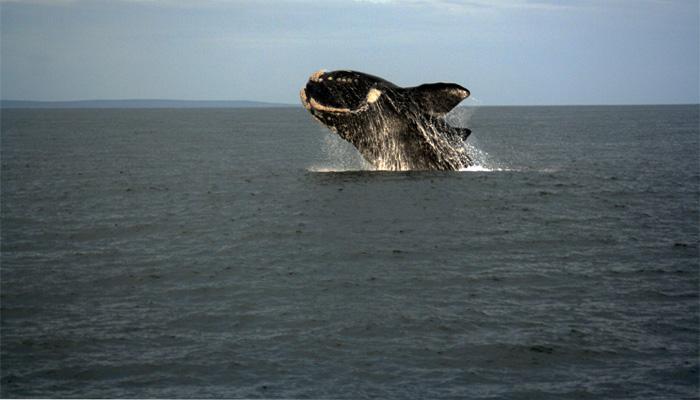Secrets of the Southern Right Whales
Southern Right Whales are the welcome visitors from Antartica from June to December every year. But how well do we know these gentle giants of the ocean? Here are a few interesting facts about them.
What is a whale footprint?
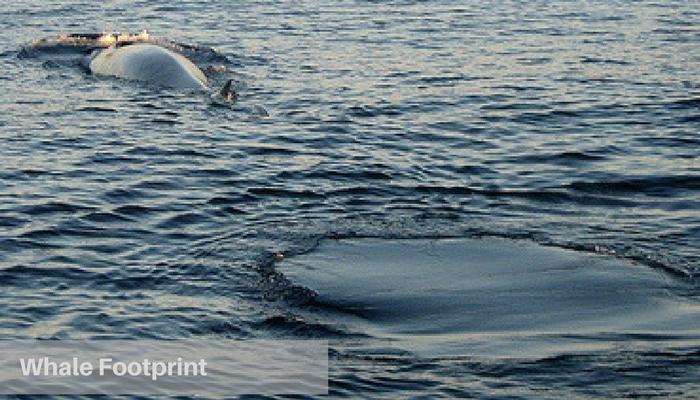
A whale's 'footprint' is the flat, smooth circle it leaves on the surface of the water when it flicks its tail or fluke with a downward stroke. This motion of their tail under the water create the footprint.
Whalers of old were able to follow a whale when it stayed close to the surface of the water as it moved along. Even if the whale did not surface they could follow the footprints that were sometimes visible in a line showing the direction in which the whale was travelling, before they slowly disappeared.
Such thirsty babies
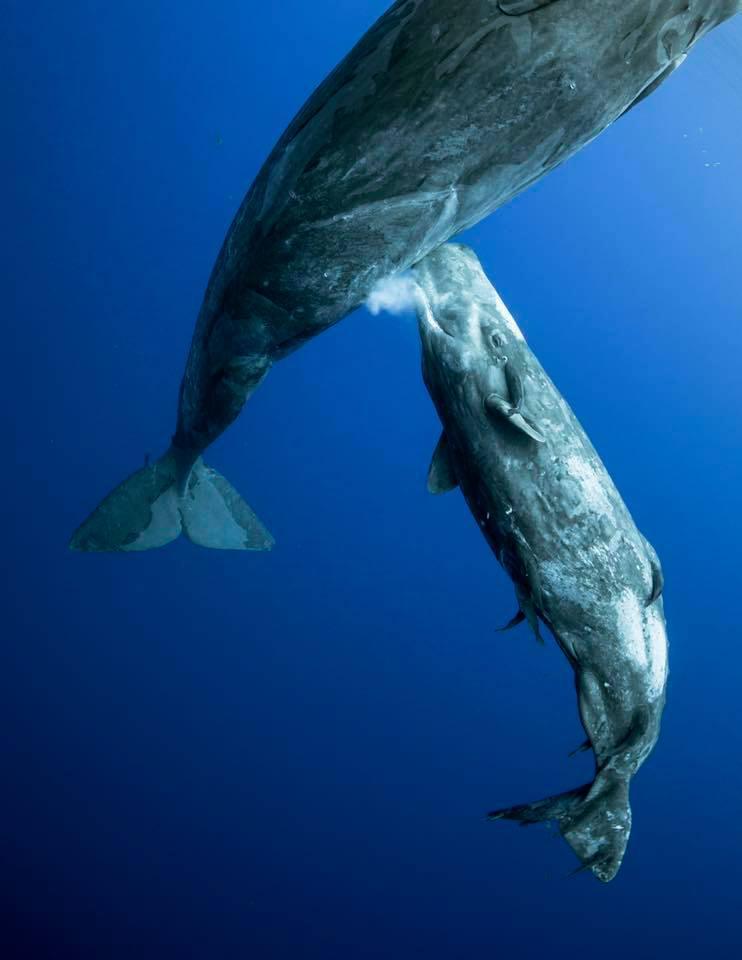
Like this sperm whale, all whale calves drink milk. Up to 600 litres per day! The mother squirts the milk into the baby's mouth under the water. It is uncertain for how long this nursing lasts. but the calf will stay with its mum for up to one year.
She will then take one year to recover and rebuild food reserves to be ready for a new cycle. Maybe you remember some more interesting fact? Write, add a post. On our Facebook page.
Are they Gulpers or skimmers?
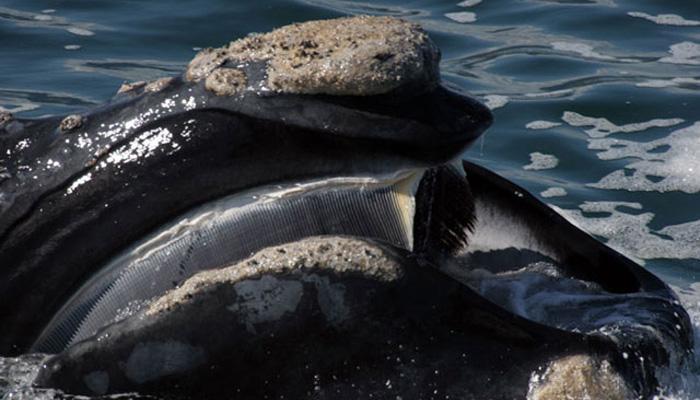
Some baleen whales skim their prey while others take huge gulps. Right whales skim up concentrations of crustaceans while swimming near the surface. Most other baleen whales, including Humpback whales, have throats that they can balloon out (like a pelican’s pouch) to engulf masses of prey. The pleated whales are called rorquals.
Beached Whales provided a super-market for bushmen
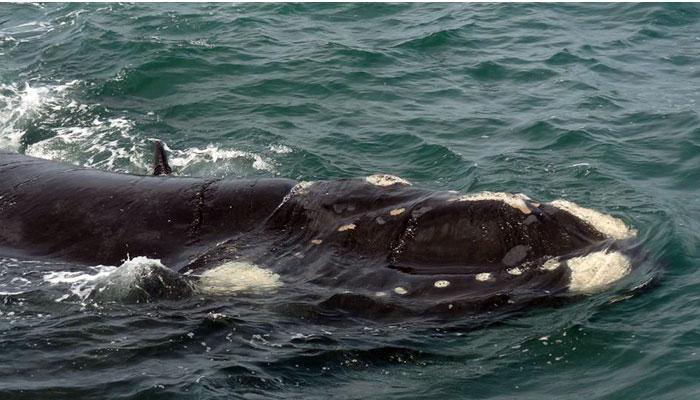
The meat & fat from a single carcass provided a month-long feast for strong-stomached Khoisan people. Blubber was stored under the sand & oil from the boiled fat was stored in dried seaweed tubes. They covered their bodies in oil which served as a cosmetic.
The dried meat was eaten raw or boiled with plants & the curved whale ribs were the perfect support for hide-covered huts. Whale vertebrae served as seats.
Do whales poop?
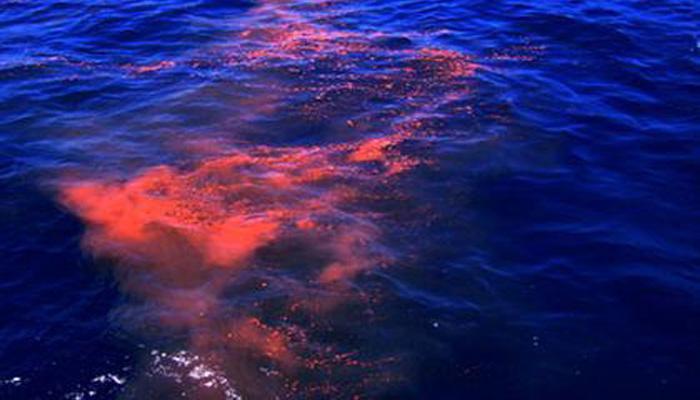
Yes, whales do poop as a way to release toxins from the body as do dolphins
Whale poop is rich in nutrients and feeds phytoplankton (plants) which allow the plant to grow and proper. The carbon that gets pulled from the environment stays trapped inside the phytoplankton for as long as it lives which could be for several millennia. Whale poop is thus extremely useful for maintaining our clean air and atmosphere.
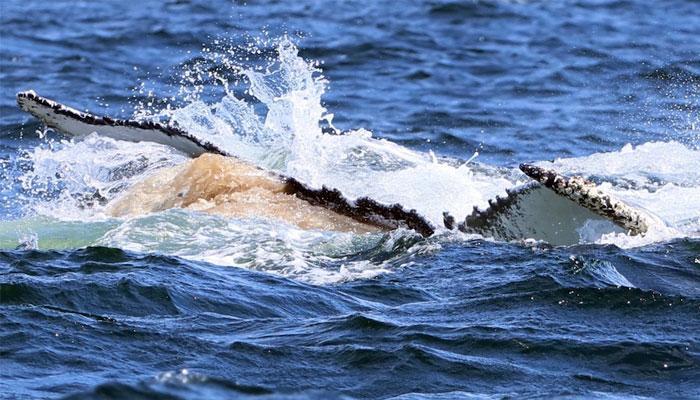
Note: These humpback whale faeces are red, a sign that the whale has eaten krill.
What is a whale's nostril called?
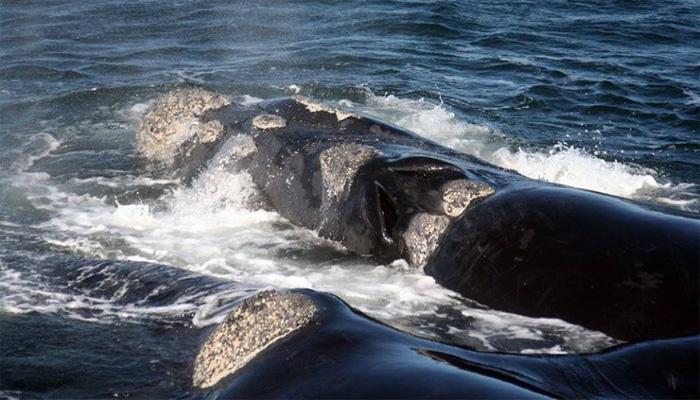
A blowhole. This is the hole at the top of the head through which the animal breathes air. As whales reach the water surface to breathe, they forcefully expel air through the blowhole. The blowholes of a southern right whale are slightly apart resulting in the characteristic v-shape spout!
Can baby whales swim when they are born?
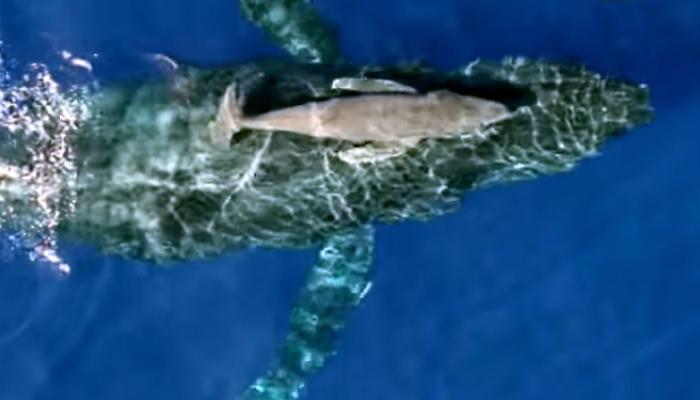
Humpback whales are born swimming, but they still need a little help from mama to find their sea legs.
As the baby whale takes its first "steps," so to speak, its never-used fins and tail flukes wobble around in the water. Sometimes, the mama humpback would be supporting the baby on her back as they move through the water together. (That gives "humpback" a new meaning, eh?)
If this newborn calf is a male, he will one day learn to sing — and probably steal other whales' songs.
How are whale calves born?
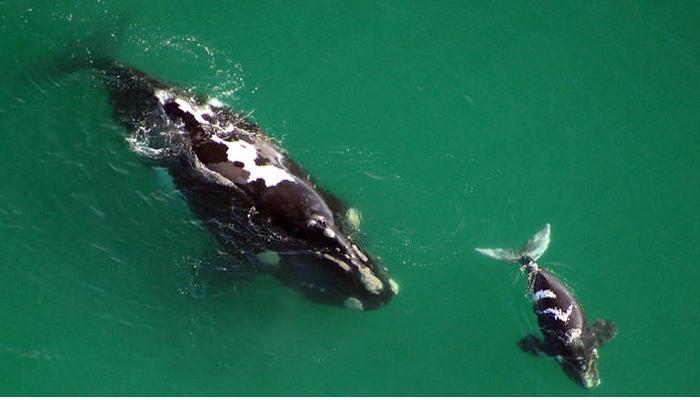
Whales give birth to their babies instead of laying eggs. This is a characteristic of most mammals. Female whales actually help each other with the birthing process by lifting the baby whale to the surface for the first breath of air!
Have you ever wondered how long is a southern right whale?
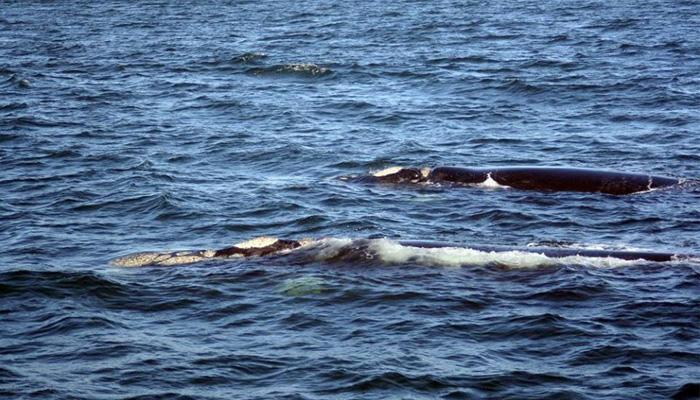
A fully mature southern right whale can grow up to 50 feet long and weigh as much as 60 tons. To put the whales' size into perspective, a Southern Right Whale is about the size of 8 elephants!
Why are some whales so spotty?
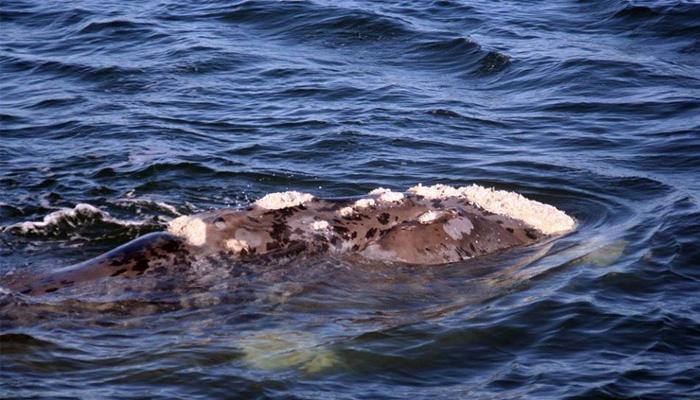
Brindle whale calves are born almost completely white, with a speckled black collar around their necks and a variable amount of black spotting across their backs. The white pigmentation on these calves gradually darkens with age to become grey in the adults. About 3.5% of calves are born as brindles and 94% of brindle animals are male.
Mums keep close to their babies for a reason.
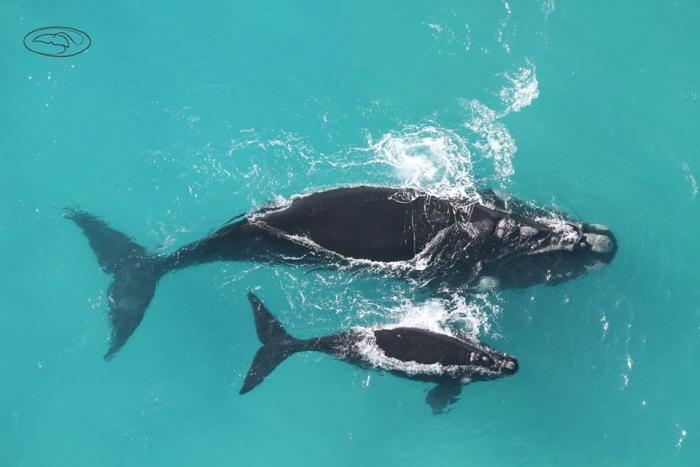
Southern Right Whale cows and calves swim so close to the beach to get the of the benefit calm water where they both can conserve energy. They swim over sandy bottoms to prevent the calf from injury. Cow-calf pairs might also stay closer to shore to avoid other whales, in particular males attempting to mate with them, because they could potentially injure the calf or interrupt nursing.
How deep can a Southern Right Whale dive?
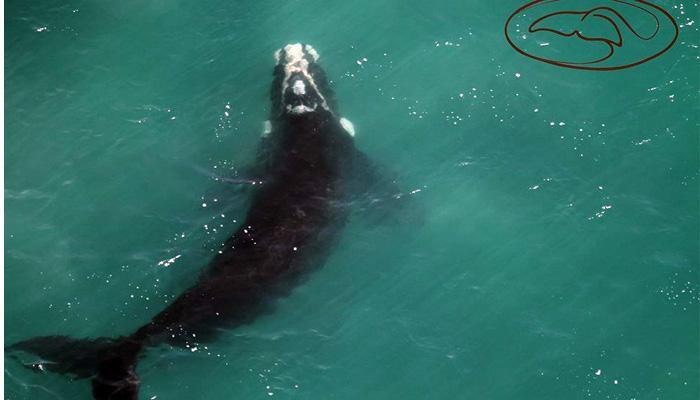
Right whales normally dive for 10-20 minutes while feeding, but can hold their breath for up to 1 hour. Their blubber "wetsuits" protect them against the cold.
Fast and Fluky Tail
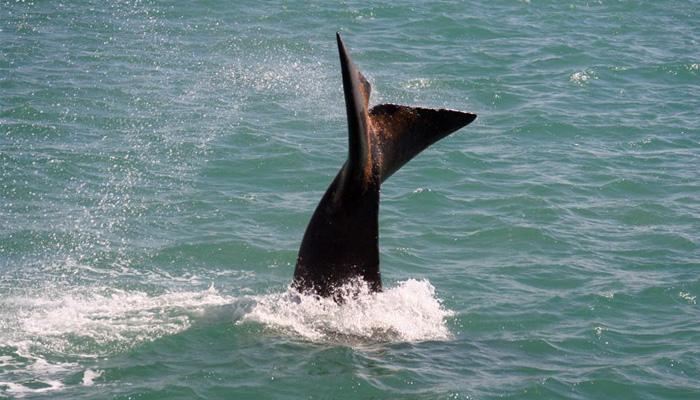
Tail flukes propel whales through the water at a speed of up to 80km/h. Whales have a flexible backbone and use their boomerang-shaped tail flukes to propel them through the water. Movement is by up and down movement of the spine and flukes.
Do whale sleep?
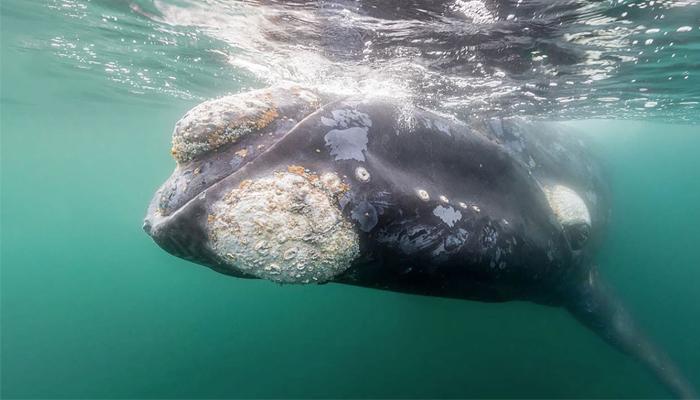
Whales and dolphins do not sleep as we do, but they rest on the surface of the sea or catnap for a few moments while they are swimming.
Each side of the brain takes it in turns to 'switch off' while the other half stays vigilant and keeps the animal breathing (which is a voluntary action in cetaceans).
Are we there yet? Why do whales leave?
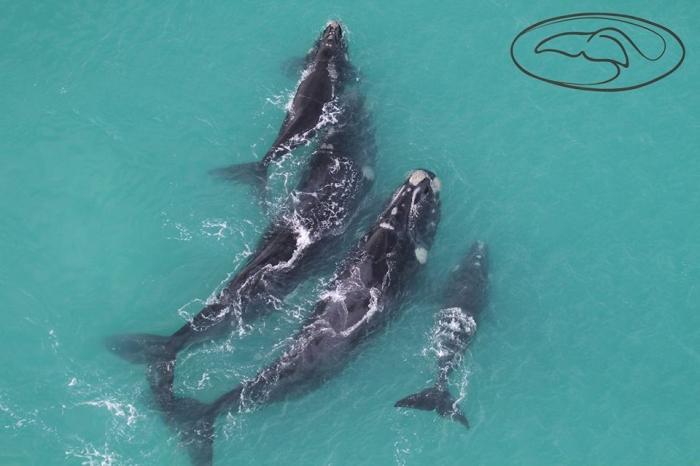
The Southern Right Whale lives in the southern and sub-Antarctic oceans except during the winter breeding season. During this breeding season, the whales migrate to warmer temperate waters around the southern parts of the African coast.
In mid-year, they will start returning from their feeding grounds in Antarctica to mate and give birth to their young all along the Cape Whale Coast, South Africa. Whales feed on tiny crustaceans called krill who favours the freezing waters at the south pole.
Call us and schedule your listing today! Contact Us
Copyright © 2025 Hermanus Online Magazine. Web Development by Jaydee media.

